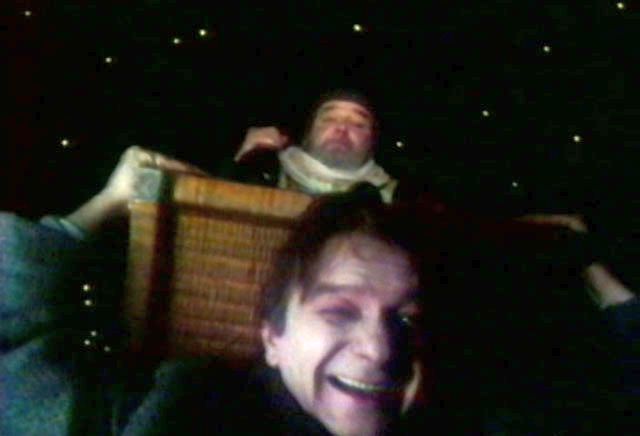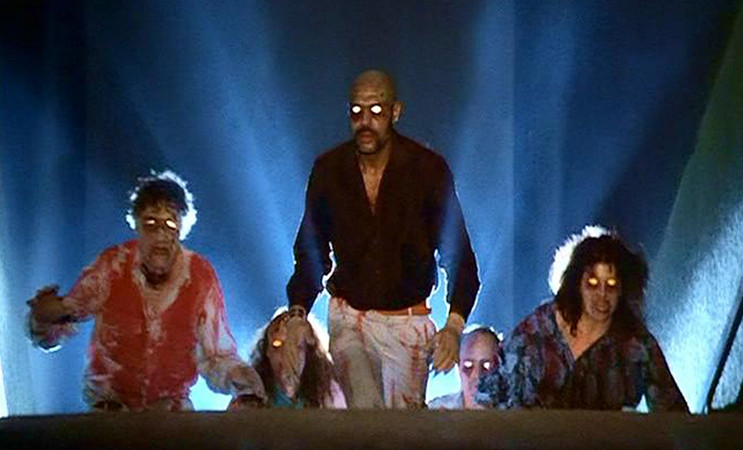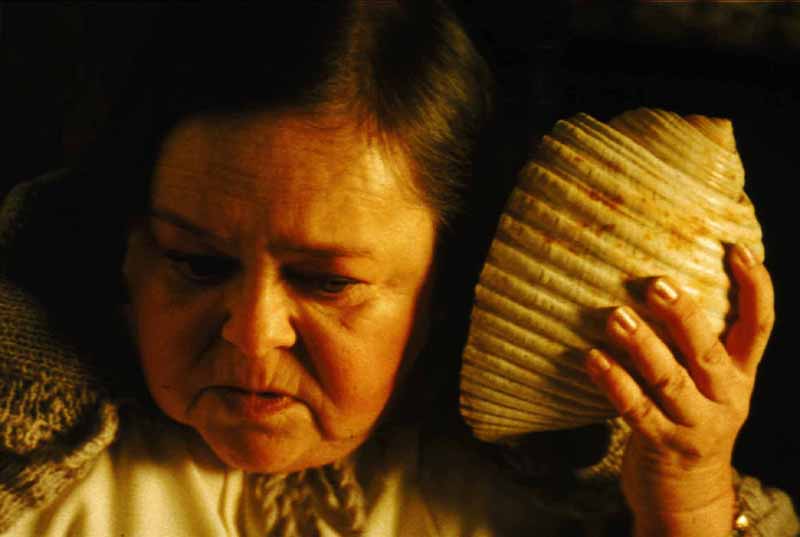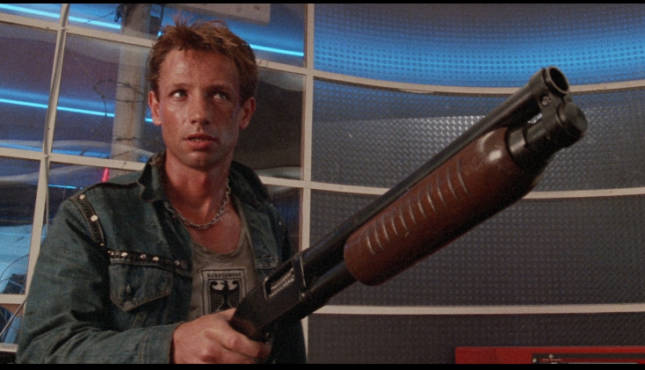6. The Blind Owl (1987)

Other films on this list flirt with surrealism, but Raul Ruiz’s The Blind Owl is the most out and out abstract art film. If the film has a plot, it follows a lonely man who gets a job as a projectionist at a bizarre cinema that seemingly has no owner and where the film prints simply arrive for him to screen. His co-worker is a ski-mask wearing lepar and he’s soon followed around by an old man who claims to be his uncle. Operating on an episodic structure, the film takes detours into more conventional genres like thriller and slapstick comedy as well as a prestige adaptation of Sadegh Hedayat’s novel The Blind Owl.
Ruiz has said that he is less interested in films with conventional conflict, instead operating on the level of poetry. The Blind Owl is a thrilling execution of this philosophy, throwing the viewer between fits of absurd laughter and existential dread. If Keaton opened the door to ‘cinema as a dream’, then Ruiz blows the whole building down. Ultimately, the film presents a meta-meditation on watching stories. To try and grasp any narrative is besides the point.
7. Demons (1985)

There’s nothing art-film about Lamberto Bava’s deliciously trashy piece of Italian grindhouse horror. Produced and co-written by Dario Argento, Demons carries the Argento trademark of style over any coherent story. A masked stranger hands out tickets to a new cinema. A random assortment of people show up for the cursed horror film, one by one transforming into flesh-eating demons. Those who don’t turn must band together to battle the horde of demons besieging them from all sides.
Son of famed filmmaker Mario Bava, Lamberto films the bloody affair with sumptuous lighting and Argento crafts some truly ingenious and disgusting death sequences. While Demons cuts straight to the jugular, the film within the film takes its time building tension and it’s an interesting dichotomy to watch that film unfold while the bodies pile up in the theater. All talk aside, sometimes you just need a film that features a man riding a motorcycle through a movie theater, cutting demon heads off with a samurai sword.
8. Anguish (1987)

Like Demons, Bigus Luna’s Anguish also features a cursed film shown within the fictional cinema. In Anguish, Luna takes a more meta-textual approach with the line between the fictional audience and ourselves getting increasingly blurred. From the outside, Luna issues a warning that we’re about to be subjected to subliminal messaging and hypnosis throughout the course of the film. At an LA movie theater, patrons gather to watch a strange film called Mommy wherein John Pressman (Michael Lerner) is hypnotized by his mother to steal people’s eyeballs for her collection. The film causes many in the audience anxiety and some to break down crying.
Things get even more bizarre when John goes to a movie theater within Mommy and starts killing the audience. Meanwhile, one of the men watching Mommy goes insane and starts killing the audience. The events on-screen continue to mirror each other to the point that we, the viewer, are uncertain which film we’re watching. Anguish is an interesting mix of the pulp genre of Demons but with some of the more high-minded exploration of the nature of cinema found in The Blind Owl.
9. Dead End Drive-In (1986)

The second drive-in film on this list and perhaps the only post-apocalyptic film centered around a movie theater. Brian Trenchard-Smith’s neon-lit Mad Max rip-off takes place in that strange near-future Australia where society has stumbled but has not completely collapsed. Gangs of “Carboys” terrorize the cities and tow-truck drivers battle each other to claim the wrecks and for the commissions. The film follows Jimmy “Crabs” Rossini, an unemployed young man who takes his girlfriend Carmen to the Star Drive-In Theater. As the two get intimate, someone steals Jimmy’s wheels. Chasing the thief, he soon discovers it’s the police doing it and that the Drive-In is actually a Concentration Camp for undesirables.
The Drive In soon acts as a petri dish for society as the ‘inmates’ are subjected to unhealthy fast food, low-brow films, drugs and repeated violence. While Jimmy is committed to escape, Carmen gives into the mob mentality, even showing signs of anti-Asian sentiments when a group of Asian refugees are brought into the camp. While the world building and storyline are lacking, Trenchand-Smith’s social commentary and exploration of human behavior inside the Drive-In is dead-on and still relevant today. When you brutalize the masses with fast food, mindless entertainment and racist sentiment, it’s no wonder they become brutes.
10. Popcorn (1991)

Without question the corniest film on the list, no pun intended. When a college film program is in danger of being defunded, the head of the school proposes an all-night horror movie marathon to drum up money. While setting up the theater, they discover a reel of film that is the lost work of a Lanyard Gates, a Charles Manson-type cult filmmaker who disappeared in a mysterious theater fire. Upon playing the film, one of the students, Maggie, recognizes the images from her own dreams and becomes convinced that Lanyard is alive and has sinister plans for the marathon.
Like Matinee, Popcorn makes extensive references to William Castle and his numerous theatrical gimmicks such as a giant mosquito flying over the crowd or electric buzzers in the theater seats. Unlike the Dante film, Popcorn doesn’t use these to teach an important lesson about life. It uses them to kill in grotesque and fairly entertaining ways. And while Matinee only had one Castle spoof, Popcorn has three, each a different B-Movie conceit. While the main horror plot is shaky, these mini-movies are quite successful in capturing the dumb fun of an old campy film.